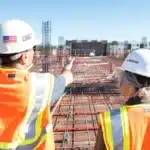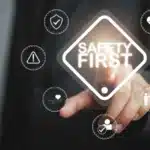Construction sites are fast-paced, high-risk environments where safety must be prioritized. While all workers face potential hazards, new and young employees are especially at risk due to their limited experience and unfamiliarity with established safety protocols. Protecting these workers requires a proactive, comprehensive approach emphasizing thorough training, strong mentorship, clear communication, and a deeply rooted safety culture.
Understanding the Risks
New and young construction workers often face a steep learning curve when entering the field. Many are unfamiliar with the wide range of hazards on a construction site, such as heavy machinery, elevated work areas, electrical systems, and hazardous materials. According to the Occupational Safety and Health Administration (OSHA), younger workers are more likely to be injured than their experienced counterparts. Several factors contribute to this increased risk:
Lack of Experience: Inexperienced workers may not fully grasp the dangers of the job or understand the safety procedures necessary to protect themselves and others.
Physical Demands: Construction work is intensive, and younger workers may not yet be conditioned to handle the physical strain, increasing their risk of injury.
Risk-Taking Behavior: Younger workers may be more inclined to take risks or feel pressure to prove themselves, sometimes resulting in unsafe decisions or behaviors.
Here are 10 Ways to Help New Construction Workers Stay Safe on the Job:
1. Provide Comprehensive Safety Training
Ensure every new worker receives training on job-specific hazards, proper equipment use, fall protection, and emergency procedures before starting work. Effective training is the cornerstone of any successful safety program. A well-structured training program for new and young construction workers should include the following: Initial Safety Orientation: All new hires should undergo a thorough safety orientation that covers the basic principles of construction site safety, including personal protective equipment (PPE), emergency procedures, and site-specific hazards. Ongoing Education: Safety training should not be a one-time event. Regular refresher courses and updates on new safety protocols or equipment are crucial. Hands-On Training: Practical, hands-on training allows workers to apply what they have learned in a controlled environment. This could include equipment operation, fall protection systems, and safe handling of materials.
2. Assign a Safety Mentor
Pair new workers with experienced crew members who can guide them, answer questions, and model safe practices during the first few weeks. Pairing new and young workers with experienced mentors can significantly enhance their safety. Mentors can provide guidance and support. Experienced workers can help new hires navigate the complexities of the job site, offering advice and support as they learn.
Modeling Safe Behavior: New employees can learn the importance of adhering to safety protocols by observing seasoned workers who prioritize safety. Real-Time Feedback: Mentors can provide immediate feedback on unsafe practices and demonstrate the correct procedures, reinforcing training in a practical context.
3. Start Each Day with a Safety Meeting
Conduct quick “toolbox talks” at the start of each shift to review potential hazards, safety reminders, and daily tasks.
4. Use Clear Signage and Markings
Post signs highlighting danger zones, PPE requirements, first-aid stations, and emergency exits to help newcomers get oriented quickly.
5. Enforce the Use of Personal Protective Equipment (PPE)
Ensure new workers properly wear hard hats, safety glasses, gloves, high-visibility vests, and other required gear—and enforce compliance.
6. Encourage Questions and Open Communication
Let new hires know there’s no such thing as a dumb question regarding safety. Foster a culture where speaking up is encouraged.
7. Limit Exposure to High-Risk Tasks Early On
Gradually introduce new workers to more complex or hazardous duties once they understand basic safety protocols.
8. Model Safety from the Top Down
Supervisors and seasoned workers should lead by example, consistently following all safety procedures and showing that shortcuts aren’t acceptable
9. Keep Work Areas Clean and Organized
Teach the importance of housekeeping—like putting away tools, cleaning up spills, and removing trip hazards—to prevent accidents.
10. Regularly Check In with New Workers
Supervisors should check in often during the first few weeks to address concerns, offer feedback, and ensure the workers are comfortable and confident in their environment.
Cultivating a Safety Culture
A strong safety culture is essential for protecting all workers, especially those who are new and/or young. This culture should be evident in every aspect of the company’s operations and should include:
Management Commitment: Safety starts at the top. Management must demonstrate a commitment to safety through actions and policies, allocating resources for safety programs, and leading by example.
Employee Involvement: Engaging workers in safety planning and decision-making can foster a sense of ownership and accountability. This could involve safety committees, suggestion boxes, and regular safety meetings.
Open Communication: Encouraging open communication about safety concerns can prevent accidents. Workers should feel comfortable reporting hazards or unsafe practices without fear of retaliation.
Utilizing Technology
Technology can significantly enhance safety for new and young construction workers. Innovative solutions include safety apps, technology, and virtual reality. Mobile apps can provide workers with easy access to safety checklists, incident reporting, and training materials. Virtual Reality (VR) Training: VR simulations can provide immersive, hands-on training experiences without exposing workers to real-world risks.
Health and Wellbeing
The physical and mental well-being of workers is integral to their overall safety. New and young workers should be encouraged to:
Stay Fit and Healthy: Physical fitness can help workers handle the demands of construction work. Employers can promote this through wellness programs and access to fitness facilities.
Manage Stress: The pressures of a new job can be stressful. Stress management resources, such as employee assistance programs or mental health days, can help.
Get Adequate Rest: Fatigue is a significant risk factor for accidents. Ensuring workers have adequate rest and breaks is crucial for maintaining alertness and focus.
Ensuring the safety of new and young construction workers requires a multi-faceted approach that includes comprehensive training, mentorship, a strong safety culture, and the use of technology. Employers can create a safer, more productive work environment by addressing these workers’ unique challenges and providing the support they need. Ultimately, the goal is to foster a culture where safety is ingrained in every aspect of the job, ensuring that all workers can return home safely at the end of each day.
Protecting young and new construction workers isn’t just the right thing to do—it’s a wise investment in the future of your workforce. With proper training, mentorship, and a strong safety culture, we can ensure that every worker goes home safely at the end of the day.
If your company needs comprehensive safety training, site safety audits, or experienced site safety professionals, Safety Consulting Specialists is here to help. We specialize in custom safety solutions tailored to your job site needs—and we’re just a phone call away.


